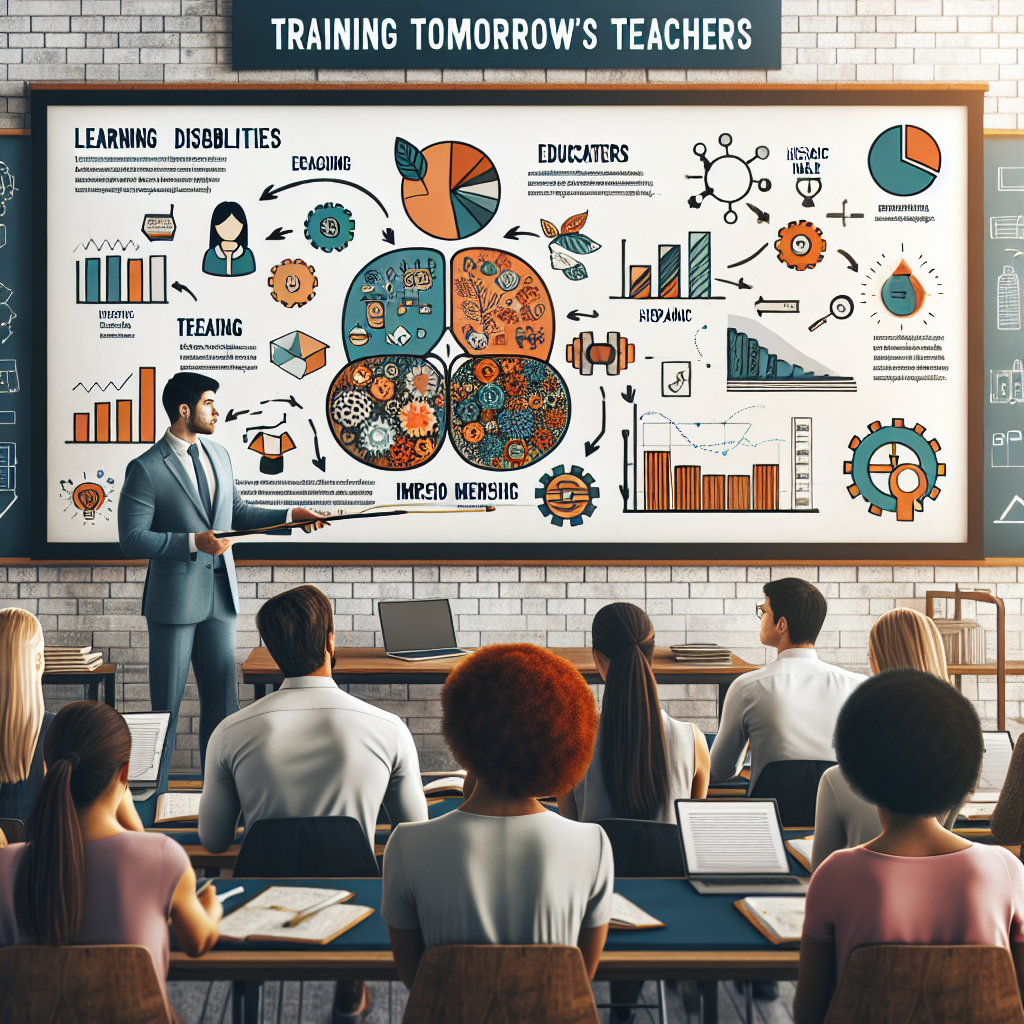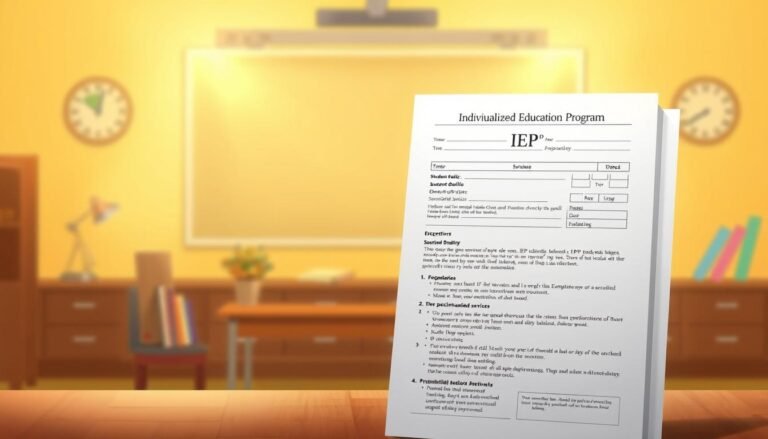
Training Tomorrow’s Teachers: Preparing Educators for the Essential Challenges of Learning Disabilities
Introduction
The landscape of education is rapidly evolving, with increasing awareness of the diverse needs of students. One of the most pressing issues today is how we prepare educators to support students with learning disabilities. With statistics indicating that approximately 1 in 5 children in the U.S. has a learning difference, the importance of Training Tomorrow’s Teachers: Preparing Educators for the Challenges of Learning Disabilities cannot be overstated. This article dives deep into the essential strategies, innovative programs, and case studies that illustrate successful practices in training educators to meet these challenges head-on.
The Growing Need for Specialized Training
Understanding Learning Disabilities
Before we delve into training strategies, it’s vital to grasp what learning disabilities encompass. Learning disabilities include a range of disorders that affect the ability to read, write, speak, or do mathematical calculations. This includes dyslexia, dyscalculia, and attention-deficit hyperactivity disorder (ADHD). Recognizing these differences is crucial for teachers, as it forms the foundation for effective teaching methods.
The Teacher’s Role in Addressing Learning Disabilities
Teachers are the frontline warriors in identifying and supporting students with learning disabilities. But without proper training, many educators feel unequipped to tackle the unique challenges these students present. Training Tomorrow’s Teachers: Preparing Educators for the Challenges of Learning Disabilities should involve practical strategies, inclusive education principles, and emotional intelligence training.
Effective Training Programs for Educators
Institution Collaboration
One of the core tenets of successful training is the collaboration between educational institutions and special education experts. Programs that foster partnerships can enhance teacher preparation significantly.
Case Study: "Collaborative Training Models"
A recent initiative in a midwestern university showcased a collaborative model that engaged special education teachers, general education instructors, and psychologists in crafting a comprehensive teacher training program. This model included workshops, simulations, and peer teaching that allowed future educators to gain hands-on experience.
Results: Post-training surveys indicated a 75% increase in teachers’ confidence in addressing learning disabilities, along with improved communication channels between special and general education teachers.
Integrating Technology
Technological advancements have the potential to revolutionize how educators are prepared for challenges like learning disabilities. Training programs must include modules that familiarize teachers with the latest assistive technologies.
Chart: Impact of Technology on Learning Outcomes
| Technology | Improvement in Learning Outcomes (%) |
|---|---|
| Text-to-Speech Software | 40% |
| Interactive Learning Tools | 55% |
| Learning Management Systems | 35% |
Based on a study analyzing the effect of various technologies on students with learning disabilities.
Behavioral and Emotional Training
Students with learning disabilities may also face challenges related to behavioral and emotional well-being. Thus, training programs should focus on developing educators’ emotional intelligence, enabling them to support students holistically.
Case Study: "Social-Emotional Learning in Teacher Preparation"
A program in California integrated social-emotional learning (SEL) into teacher training. Educators participated in guided discussions, role-play scenarios, and reflective practices to prepare them for the complex emotional landscapes of their classrooms.
Analysis: The incorporation of SEL not only equipped teachers with strategies to manage classroom behavior effectively but also increased empathy and understanding towards students facing learning challenges.
Practical Strategies for Inclusive Education
Differentiated Instruction
Training programs should encourage educators to adopt differentiated instruction strategies. This approach acknowledges each student’s unique learning profile and tailors teaching methods to meet diverse needs.
Example: Flexible Grouping Techniques
Teachers can implement flexible grouping methods—allowing students to work in varied group compositions or individually based on their strengths. A school in Texas reported significant improvements in engagement and academic performance after integrating such strategies.
Creating a Positive Classroom Environment
A supportive and inclusive classroom environment is crucial for students with learning disabilities. Training future teachers to cultivate such spaces can significantly impact student success.
Case Study: "Creating Positive Learning Environments"
A New York City school initiated a program where teachers were trained in classroom design, focusing on sensory-friendly environments. The program addressed lighting, seating arrangements, and accessible materials, fostering inclusivity.
Outcome: Teachers reported a 60% reduction in classroom disruptions, leading to better learning outcomes for all students.
Ensuring Continuous Professional Development
Importance of Lifelong Learning
The landscape of learning disabilities is shifting, and continuous professional development is essential for teachers. Ongoing training can ensure that educators remain informed about the latest research, techniques, and technologies.
Peer Collaboration and Mentorship
Establishing a mentorship system within schools can provide new teachers with the support they need in the real world. Pairing experienced educators with new hires can facilitate knowledge sharing and provide tailored guidance.
Success Story: "Mentorship Programs in Action"
A mentorship initiative in Florida allowed novice teachers to partner with seasoned professionals over their first three years in the field. The result was not only a boost in retention rates but also improved skill sets in accommodating learning disabilities.
Conclusion
In conclusion, Training Tomorrow’s Teachers: Preparing Educators for the Challenges of Learning Disabilities involves a multifaceted approach. By emphasizing collaboration, technology integration, emotional intelligence, and continuous professional development, we can better equip educators to face the complexities of inclusive education.
As we look to the future, it’s imperative that teacher training programs adapt and evolve with the needs of their students. By fostering a culture of empathy, understanding, and support, we can ensure that every child, regardless of their learning ability, is provided with the tools they need to succeed.
FAQs
1. What are the main types of learning disabilities?
Learning disabilities include dyslexia, dyscalculia, dysgraphia, and ADHD, among others. Each type affects learning differently.
2. How can teacher training programs integrate technology?
Programs can incorporate training on various assistive technologies, ensuring teachers are equipped to use tools effectively in their classrooms.
3. What role does emotional intelligence play in teaching students with learning disabilities?
Emotional intelligence helps educators understand and respond to the emotional needs of their students, fostering a more supportive learning environment.
4. Are there specific curricula designed for training teachers in this area?
Yes, many universities offer specialized education degree programs focusing on special education, which cover strategies for teaching students with learning disabilities.
5. How can I support a teacher who is struggling with this aspect of their role?
Encourage an open dialogue about challenges, provide resources, and suggest professional development opportunities focused on learning disabilities.
6. What is the impact of a positive classroom environment for students with learning disabilities?
A positive classroom environment leads to greater engagement, reduced anxiety, and improved learning outcomes for all students, particularly those with learning differences.
By focusing on these key areas, we can ensure that Training Tomorrow’s Teachers: Preparing Educators for the Challenges of Learning Disabilities is not just a topic of discussion but an actionable objective that empowers educators and enriches the learning experience for every student.
















